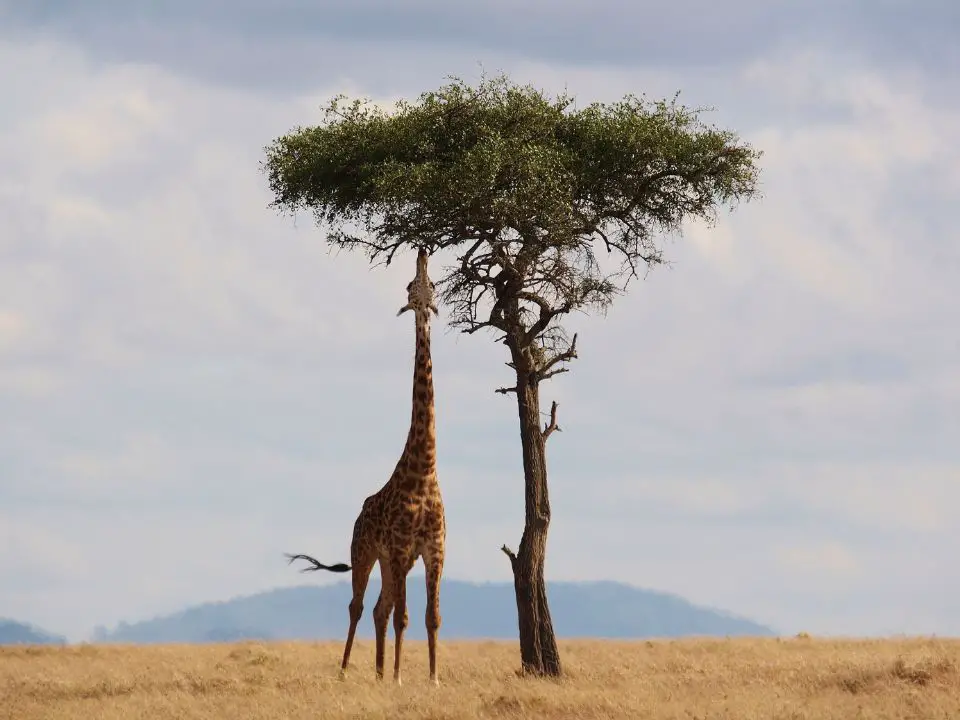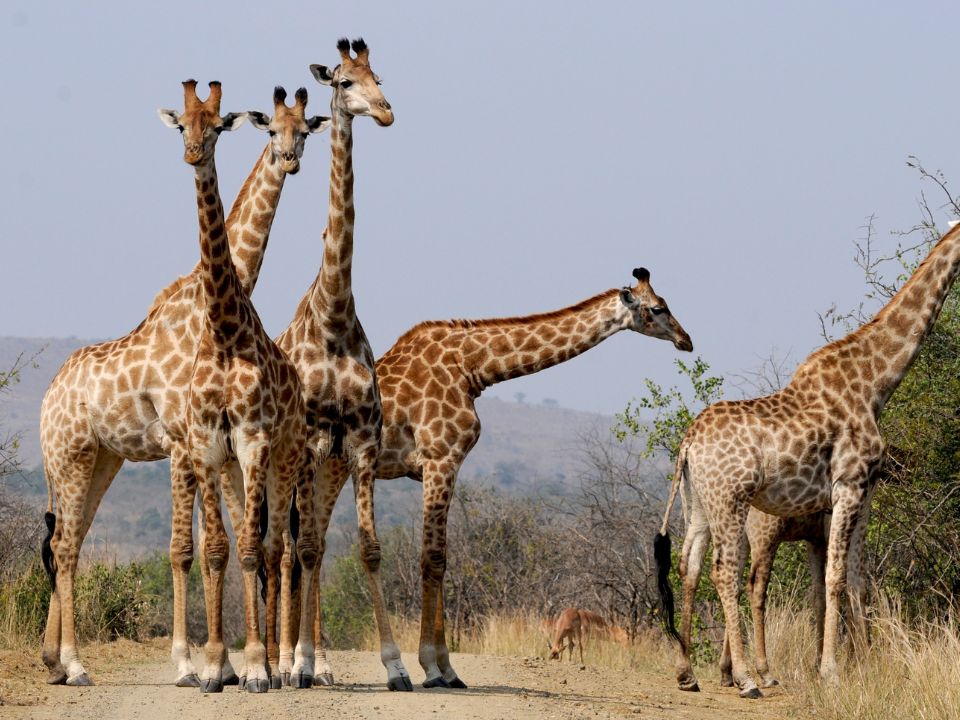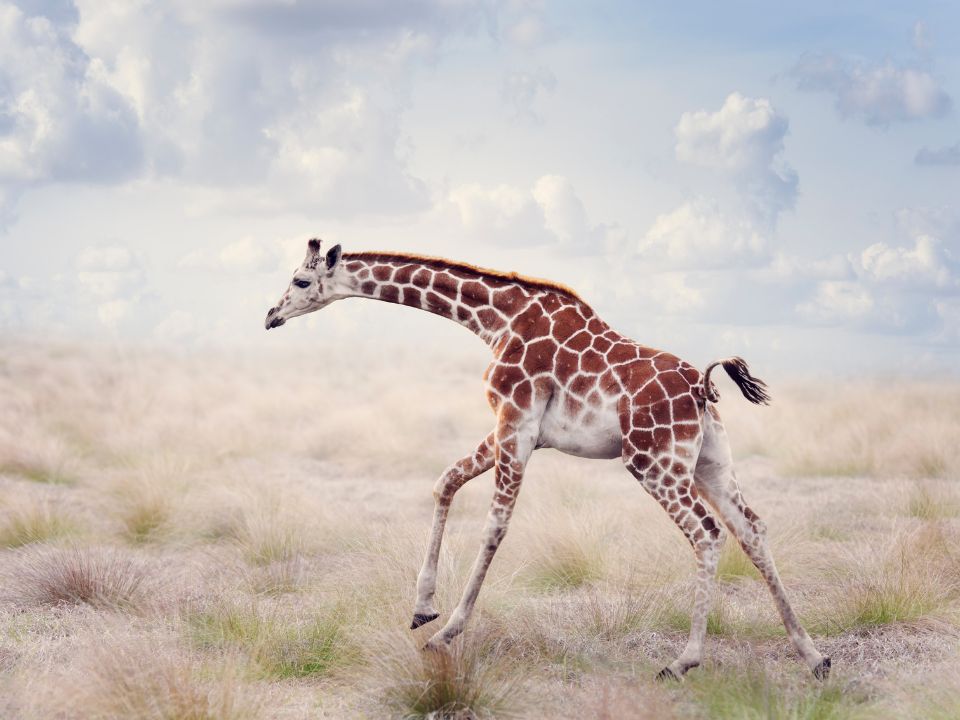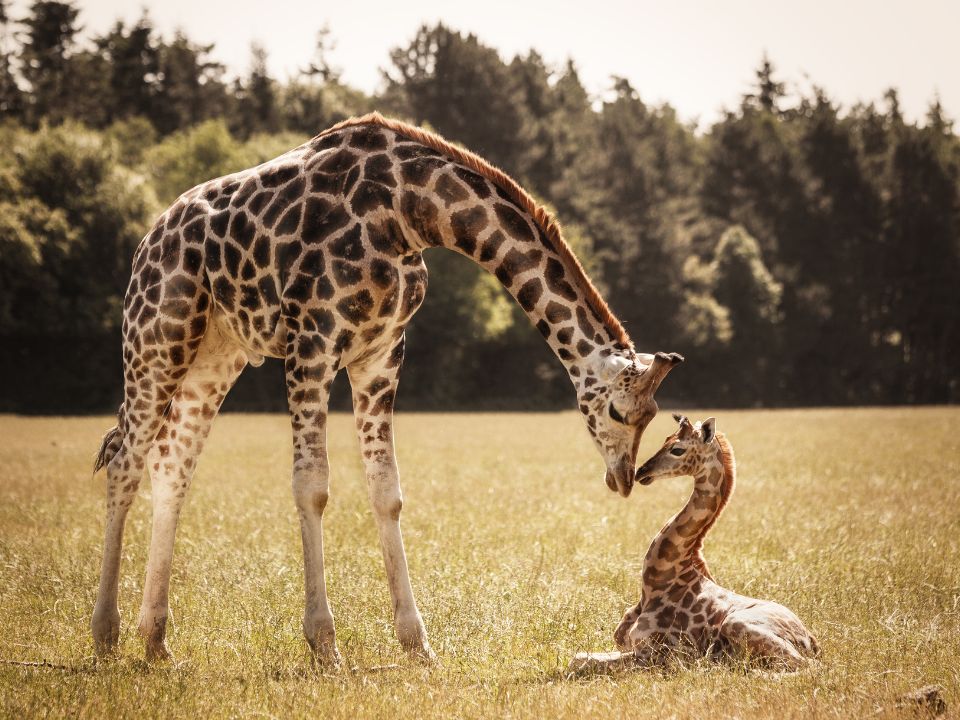Giraffes are one of the most iconic animals in the world, known for their distinctive long necks and legs, unique coat patterns, and towering height. They are also remarkable for the many adaptations they have developed to survive in their environment. These adaptations can be broadly categorized into three types: structural, behavioral, and physiological.
Adaptations Of A Giraffe
Structural adaptations include the physical characteristics that giraffes possess, such as their long necks and legs, cloven hooves, and unique coat patterns. These adaptations allow giraffes to forage for food, travel long distances quickly, walk on rough terrain, and camouflage themselves from predators.
Behavioral adaptations refer to the actions and behaviors that giraffes exhibit, such as their social organization, feeding habits, and communication. These adaptations enable giraffes to find food and water, protect themselves from predators, and reproduce successfully.
Physiological adaptations refer to the internal systems and processes that allow giraffes to survive in their habitat. These adaptations include their unique cardiovascular system, efficient digestion, thermoregulation, and slow metabolism.
Together, these adaptations make giraffes one of the most fascinating and well-adapted species on the planet. By understanding these adaptations, we can gain a deeper appreciation for the complexity and diversity of the natural world and how organisms have evolved to survive and thrive in their environments.

Behavioral Adaptations Of A Giraffe
Giraffes are known for their unique physical adaptations, such as their long necks and legs, but they also exhibit a variety of behavioral adaptations that help them survive in their habitat. Here are some of the behavioral adaptations of giraffes:
Social Behavior:
Giraffes are social animals and live in loose groups of 10-20 individuals, although larger groups can be seen in areas with abundant food. These groups are usually composed of females and their young, while males tend to be solitary or form temporary associations during mating season. Living in groups helps them to protect each other from predators, share information about food sources, and provide mutual grooming.

Feeding Behavior:
Giraffes are herbivores and have a specialized diet of leaves, flowers, and fruits. Their long necks allow them to reach high branches and leaves that other herbivores cannot, making them competitive foragers. Giraffes also have tough tongues and lips that are able to strip leaves from branches without being damaged by thorns or spines.
Drinking Behavior:
Giraffes have to spread their front legs to reach down to the ground to drink, due to their long necks. This makes them vulnerable to predators, so they often remain standing and do not drink for long periods. Giraffes can also obtain water from the leaves they eat, which reduces their need to drink.
Mating Behavior:
Male giraffes use their long necks as weapons during mating season when they compete for females. They swing their necks at each other in a behavior called “necking,” and the male with the stronger neck and most successful strikes is usually the one that mates with the female. Males also sometimes court females by following them for long periods and emitting a low humming sound.
Resting Behavior:
Giraffes have a unique resting behavior where they sleep standing up, with one eye open and their head resting on their hindquarters. This allows them to quickly wake up and flee from predators if necessary. Giraffes also have a short sleep cycle and take naps throughout the day instead of sleeping for long periods.
Structural Adaptations Of A Giraffe
Giraffes are well-known for their distinctive physical appearance, with their long necks and legs, and unique coat patterns. These structural adaptations have evolved to help giraffes survive in their environment. Here are some of the structural adaptations of giraffes:
Long Neck:
- The most obvious structural adaptation of giraffes is their long necks, which can reach up to 1.8 meters in length making them the tallest land animal on Earth. This adaptation allows giraffes to reach high branches and leaves that other herbivores cannot, giving them an advantage in foraging for food.
- It also provides them with a vantage point from which to spot predators such as lions or hyenas before they have a chance to attack.
- When threatened, the Giraffe will swing its powerful neck around and deliver a lethal blow with its head. This maneuver has been known to kill even adult lions outright!
- The neck is made up of only seven vertebrae, the same number as in most mammals, but each vertebra is elongated, giving the neck its characteristic shape.

Coat:
The Giraffe’s coat provides excellent camouflage against predators as well as helps them blend into their environment. The coat also has an interesting pattern which helps break up the animal’s outline making it more difficult for predators to spot. It also offers some protection against bites and scratches from thorns or branches.
Long Legs:

- Giraffes also have long legs which can be up to 1.8 meters in length, with special hooves that help them run really fast! They can reach speeds of up to 35 miles per hour when running full-out!
- However, because of the length of its legs, the giraffe must use a different gait. It moves both left feet forward at once followed by both right feet moving forward at once. This is known as pacing and allows the animal to cover large distances quickly without tiring itself out too much.
- Does the giraffe walk by moving its right legs together and then its left legs together? This is because the neck of the giraffe is working in synchronicity to keep the body in balance. Additionally, when galloping, the giraffe uses its front legs together and then its back legs together – just like most other mammals!
Hooves:
Giraffes have cloven hooves, which are split into two toes, and are adapted for walking on rough and uneven terrain. The hooves are also covered with a tough outer layer that protects them from injury and wear.
Physiological Adaptations Of A Giraffe
What allows the giraffe to survive in its harsh environment? One key adaptation is its physiology, which has evolved to allow the giraffe to live and thrive in Africa’s hot, dry climate.
High Blood Pressure:
Giraffes have unusually high blood pressure, which is essential for pumping blood up to their brain against the force of gravity. This adaptation is made possible by thick-walled arteries and a complex system of valves in the neck that prevent blood from flowing back down to the heart.
Neck Skeletal Structure:

- The length of a giraffe’s neck is made possible by its unique skeletal structure. Its vertebrae are much longer than those of other mammals, and they are connected by strong ligaments that allow the neck to support its great weight without collapsing under pressure. Additionally, the bones at the top of the Giraffe’s spine are fused so that they cannot move independently from one another – this gives extra stability to the whole structure.
- The neck consists of seven cervical vertebrae, which are much longer than those found in other mammals. This means that the giraffe can raise or lower its head without having to bend its legs or body.
Slow Metabolism:
Giraffes have a slow metabolism, which allows them to conserve energy and go longer without food. This adaptation is useful in their habitat, where food can be scarce, and giraffes need to travel long distances to find it.
Efficient Digestive System:
Giraffes have a complex digestive system that is adapted to their herbivorous diet. They have a four-chambered stomach and a long intestine that allows them to extract nutrients from tough plant material. They also have a special enzyme in their saliva that helps to break down the tannins in the leaves they eat.
Saliva:
Giraffes produce a lot of salivae – up to 12 liters per day! This is because they spend so much time eating leaves (which are tough to digest). The extra saliva helps them break down the leaves so they can get the nutrients they need from them. It also helps keep their mouths moist since they don’t drink very often – only once every few days.
Tongue:
A giraffe’s tongue is one of its most notable adaptations. Measuring up to 20 inches in length, the tongue is prehensile, meaning it can grasp and manipulate objects. The tongue is also covered in a thick layer of mucous that protects it from thorns and other sharp objects.

Giraffe Water Needs:
Because giraffes eat mostly plants (which contain a lot of water), they don’t need to drink very often – only once every few days. When they do drink, however, they can consume up to 10 liters of water at one time! This adaptation allows them to go for long periods without having to find fresh sources of water.
Vision:
Giraffes have excellent vision, which allows them to spot predators from far away. Their eyes are also positioned on the sides of their head, giving them nearly 360-degree vision. This helps spot predators, but it also means that giraffes tend not to look where they’re going when running.
Unique Cardiovascular System:
Giraffes have a unique cardiovascular system that allows them to cope with the high blood pressure needed to pump blood up to their brain. They have a series of one-way valves in their neck arteries that prevent blood from flowing back down, and a thick-walled heart that is highly efficient at pumping blood.
Thermoregulation:
Giraffes can regulate their body temperature through their coat color and sweat glands. Their coat color helps to reflect sunlight and prevent overheating, while sweat glands on their forehead and neck allow them to cool down in hot weather.
Neck Valves:

Giraffes have valves in their necks that prevent blood from rushing to their heads when they bend down to drink water. This helps them avoid fainting or getting dizzy!
Large Lungs:
Giraffes have large lungs that are adapted to their size and allow them to take in more oxygen with each breath. This adaptation helps giraffes to cope with the low oxygen levels at high altitudes, where they often feed.
Large Heart:
To support their high blood pressure, giraffes have large hearts, which can weigh up to 12 kilograms. The heart is also highly efficient at pumping blood, with a thick muscle wall that allows it to generate more pressure with each beat.
In conclusion, giraffes are truly remarkable creatures that have evolved an impressive array of adaptations to survive in their environment. Their long necks and legs, unique coat patterns, and cloven hooves are just some of the structural adaptations that enable giraffes to forage for food, travel long distances, and protect themselves from predators. Behavioral adaptations, such as their social organization and communication, allow giraffes to live in groups and reproduce successfully. Lastly, physiological adaptations, including their efficient digestion, unique cardiovascular system, and thermoregulation, allow giraffes to extract nutrients from their food, cope with high altitudes, and regulate their body temperature.
Studying these adaptations not only provides a glimpse into the fascinating world of giraffes but also highlights the incredible diversity and complexity of life on our planet. The adaptations of giraffes serve as a reminder of the power of evolution and the ingenuity of the natural world. By understanding the adaptations of giraffes and other species, we can gain a deeper appreciation for the complexity of life and the remarkable ways in which organisms have adapted to survive and thrive in their environments.


Leave a Reply